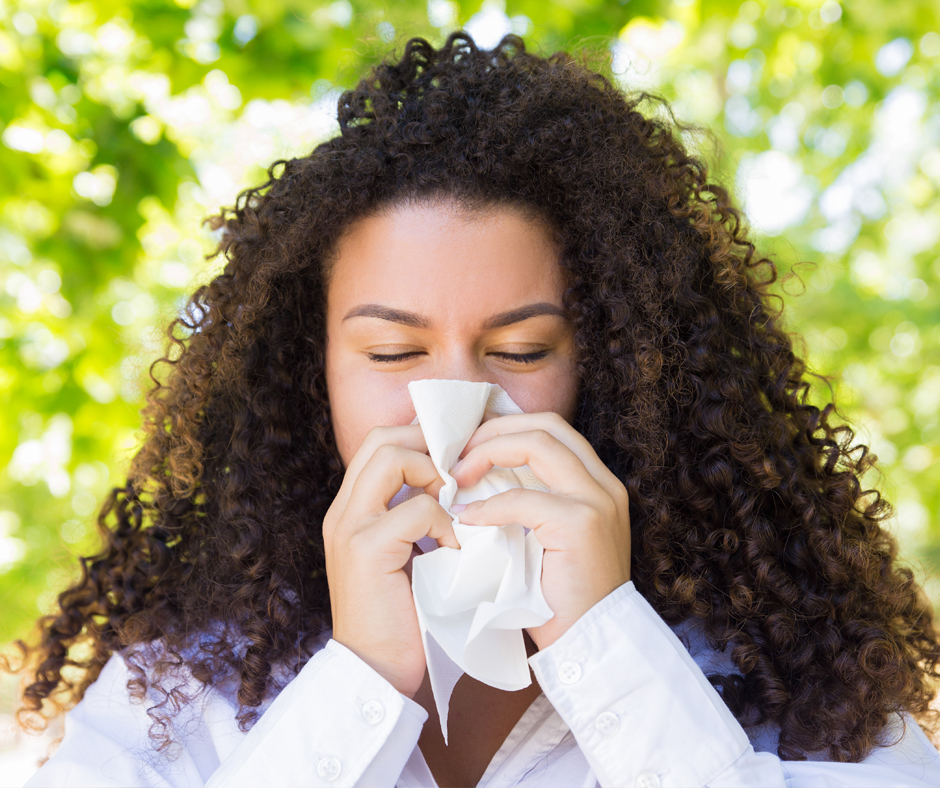Allergies are a common and chronic condition that can range from mildly annoying to downright deadly. They’re caused by an overreaction of the immune system to a (normally harmless) foreign substance such as pollen, mold, pet dander, peanuts, shellfish, or eggs. Environmental allergies usually cause symptoms like sneezing, itchy eyes, and nasal congestion, which can last for weeks or even months at a time. Food allergies are often more severe, causing symptoms like hives, abdominal pain, swelling of the mouth or throat, dizziness, and even trouble breathing.
Treatment options depend on the type and severity of allergy you have. Medications like antihistamines and decongestants can help relieve symptoms, but they don’t treat the underlying allergy (so symptoms are likely to return.) Avoiding known triggers is the best course of action, especially in cases of severe food allergy. But avoidance isn’t always possible, particularly in people with common triggers like pollen, dust, eggs, or wheat. In those cases, allergy immunotherapy can “teach” the immune system to tolerate allergy triggers by introducing small amounts to the body over a long period of time.
Despite these available treatments, millions of Americans continue to live with chronic allergies. Many people assume that allergies are a fact of life that has to be tolerated, unaware that relief is possible. But even if you aren’t comfortable taking daily medicine, knowing the ins-and-outs of your allergy issue can help you take steps to reduce symptoms and improve your quality of life.
To that end, this comprehensive allergy health roundup can help.
The ABC’s of Allergy Treatment
There are a variety of medications and treatment methods designed to reduce allergy symptoms and train your immune system to tolerate certain substances. For those with chronic allergies, treatment provides a path to real relief from that sneezing, itching, stuffy allergy feeling. Here’s what you need to know.
It May Not Be a Cold: Common Fall Allergies
Fall is still a common time for seasonal allergies, taking some of the fun out of its fantastic foliage and comfortable climate. Because it’s also the start of cold and flu season, common conditions that share many of the same symptoms as seasonal allergies, it can be hard to know the cause behind your fall congestion. Learning how to tell the difference between the common cold and fall allergies can help you manage your symptoms and find the right relief.
Summer Means Grass Mowing Season: 10 Ways to Combat Summer Allergies
Grass pollen is one of the most common causes of outdoor allergies, triggering troublesome symptoms like sneezing, sinus congestion, headaches, and even hives. Lawn mowers are notorious for kicking up this allergy-producing pollen, turning this sticky summer chore into an even bigger challenge. But you don’t have to choose between curb appeal and comfort – as long as you know these ten summer mowing tips.
The Top 8 Advantages of Allergy Drops
Sublingual allergy drops are a safe, effective, and painless way to treat chronic allergies with immunotherapy. Yet many allergists continue to prescribe painful and time-consuming injections to patients with severe allergies. To help you make the choice between shots and sublingual therapy, here are the top eight advantages of allergy drops.
6 Ways to Beat Spring Allergies
In many parts of the United States, spring allergies begin as early as February and last until summer. This means allergy sufferers spend months of their year with symptoms that range from a mild case of the sniffles to full-blown hay fever. If you’re tired of sheltering indoors for the spring season, here are six easy ways to beat spring allergies.
The Difference Between Food Intolerance and Food Allergy
Although they both cause unpleasant reactions in the body, food intolerance and food allergy have different causes, symptoms, and severities – and can have far different outcomes. In this blog, we’re dishing out everything you need to know to be prepared for your next bite.

